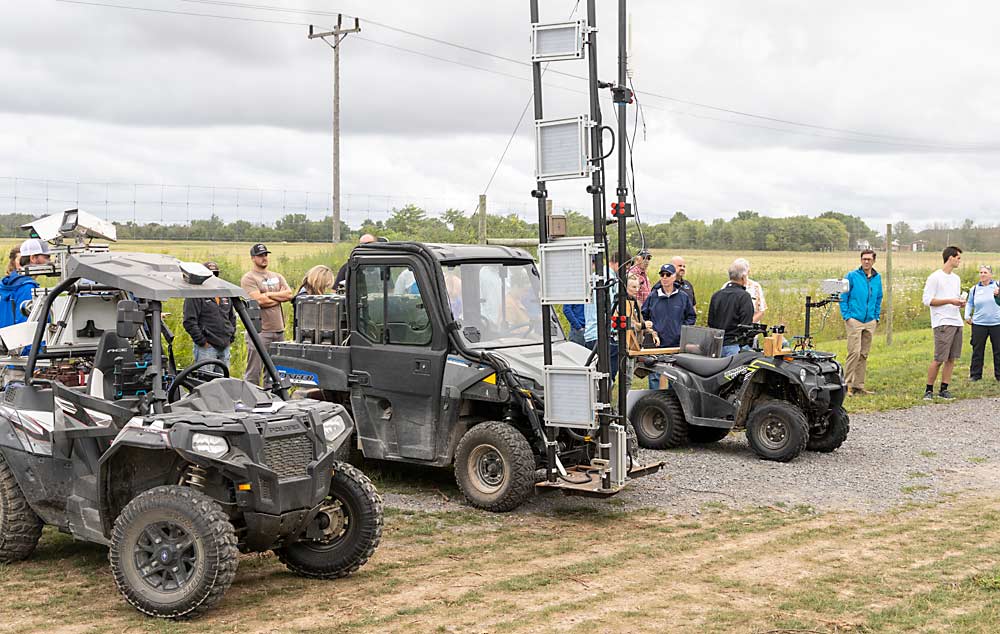
Precision crop load management — and the computer vision technology that is gradually improving its accuracy — was a major topic during the Cornell Cooperative Extension Lake Ontario Fruit Program’s annual summer tour held in Orleans County, New York, on Aug. 9.
Cornell fruit crop physiologist Terence Robinson said Cornell has developed crop load management methods in the past, but most involved hand counting of blossoms or fruitlets, a tedious task that few growers are willing to do consistently. But there are companies developing computer vision technologies that can count and size fruit with special cameras and other sensors, replacing hand measurements with images and algorithms and saving growers a lot of time and frustration, he said.
“All these technologies I have great hopes for,” Robinson said. “There’s a lot of money that comes with being able to produce exactly the right size and quality of fruit.”
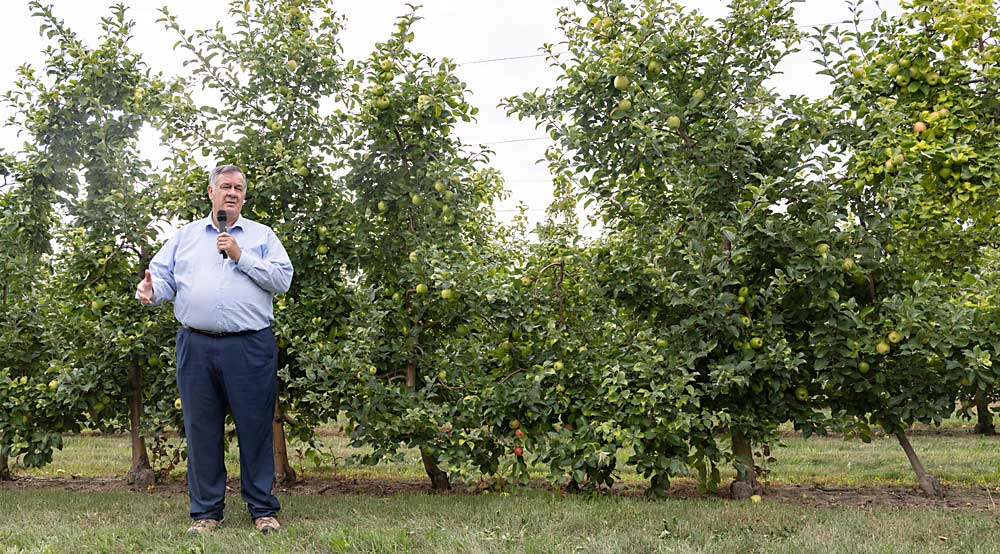
Technology companies were on hand to display their products during the field day, including Vivid Machines, Dropcopter, Green Atlas, Farm Vision Technologies, FruitScout, Moog and Outfield Technologies. At Fish Creek Orchards in Albion, a few of the companies displayed their equipment or gave a demonstration of their special cameras, which can be walked, driven or flown via drone through orchard rows to count blossoms, fruitlets and fruit.
The tour, which visited orchards west of Rochester, New York, near the southern coast of Lake Ontario, covered a number of other topics. At Kast Fruit Farm in Albion, Cornell fruit pest management specialist Janet van Zoeren discussed preemergent herbicide application timing and the latest developments in mating disruption. Grower Brett Kast said mating disruption works well in his larger blocks, and his trap counts and pest populations have gone down over time. As growers lose access to chemicals, mating disruption could become a more important pest management tool in the future, he said.
Cornell soil health specialist Deborah Aller discussed a statewide orchard soil health project, started in 2021, that seeks to find the soil health indicators that best predict fruit yield and quality, as well as the management practices that impact those indicators. Aller plans to collect samples from low- and high-performing orchard blocks (with a focus on Honeycrisp) from 11 orchards throughout New York, and to analyze their soil health, foliar nutrient content and nematode populations. She also plans to survey growers about their management practices, she said.
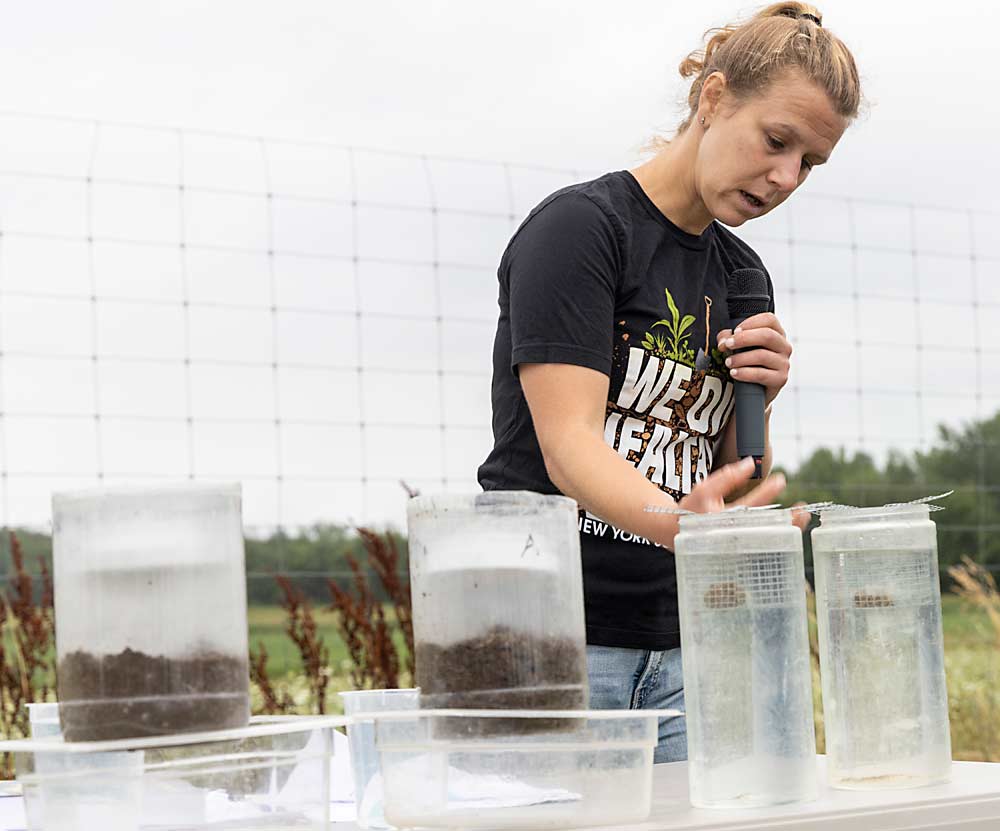
At Orchard Dale Fruit Co. in Waterport, Robinson discussed pruning severity experiments being conducted throughout New York orchards, as part of a multistate crop load management project.
Pruning is one of three essential crop load management steps that help growers get closer to their desired fruit number, along with chemical and hand thinning. Robinson gave an example: Let’s say your target number of apples per tree is 120, but you have 2,000 flowers per tree during bloom. Chemical thinners alone won’t get you down to 120, but you can get much closer with pruning followed by chemical thinning, he said.
“Whatever your spacing is, prune to about 1.8 to 2 times the final fruit number,” Robinson said. “If you get the bud number down through pruning, then all the rest is more successful.”
Pruning and chemical thinning in combination is better at breaking Honeycrisp’s biannual growth cycle than chemical thinning alone. Biannual bearing poses a problem in many New York Honeycrisp blocks, leading to small crops one year and poor color and flavor the next year, Robinson said.
At Nesbitt Fruit Farms in Waterport, grower Shane Nesbitt discussed a Honeycrisp block with a history of biannual bearing. Only a few hundred yards from Lake Ontario, the block ranges from barely any buds one year to a “big old monster crop” the next, he said.
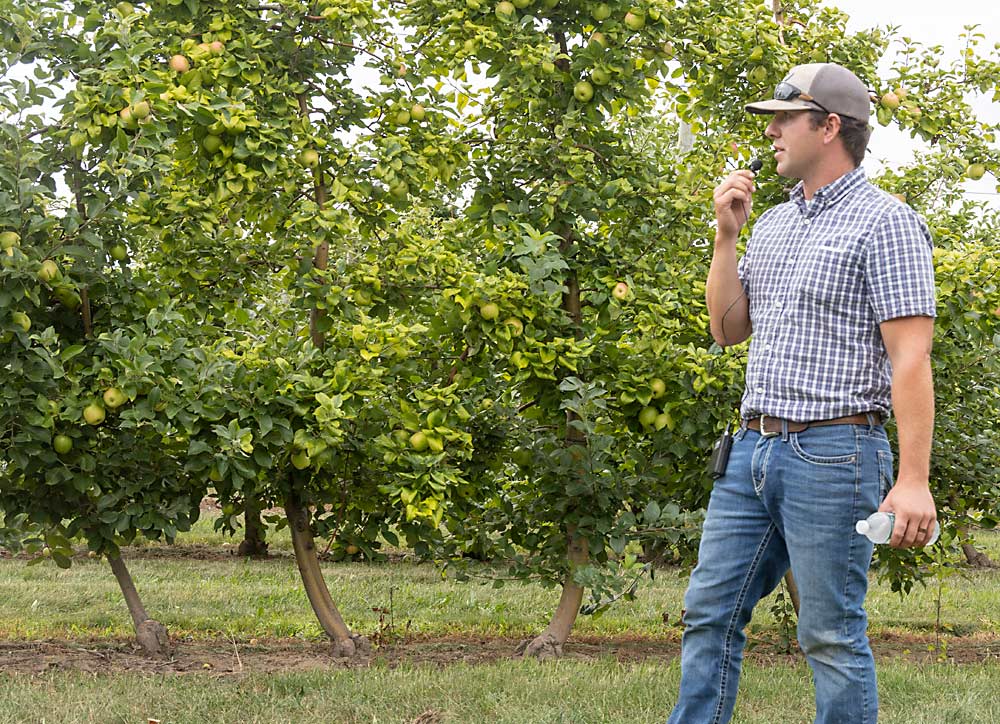
Nesbitt wanted to correct past overcropping mistakes and seek a more balanced crop load for the Honeycrisp block. So, last year, with help from Cornell Cooperative Extension specialist Mario Miranda Sazo, he tried chemical blossom thinning guided by the pollen tube growth model. The model, developed in part by Cornell horticulture professor Greg Peck, helps growers time sprays to set only the target number of fruit by measuring the growth of pollen tubes within flowers.
Nesbitt said blossom thinning has helped him balance the block’s crop load the past couple of years.
Robinson said that, ideally, you want 60 to 70 percent of your spurs flowering every year, rather than 100 percent flowering one year and zero the next because none of the spurs were allowed to rest. He told the tour there were a lot of resting spurs in Nesbitt’s block, which will lead to a more manageable crop with good fruit size this year and help ensure that next year’s crop isn’t too small.
Robinson hopes other New York growers will emulate Nesbitt’s success, but trying to get them to blossom thin has been difficult over the years.
“Almost nobody does it,” he said. “But with the pollen tube growth model, and especially with the improvements that they’re making, I think it’s a relatively safe thing.”
New York’s variable weather during bloom — frost and freeze events or periods of sudden heat — makes the pollen tube growth model difficult to use on a consistent basis, but its potential to break the biannual bearing cycle makes it worth trying on Honeycrisp, Robinson said.
—by Matt Milkovich


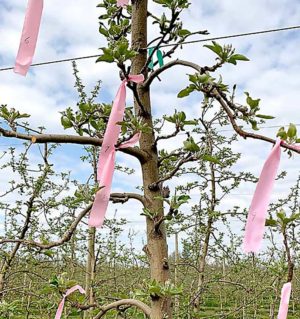





Leave A Comment